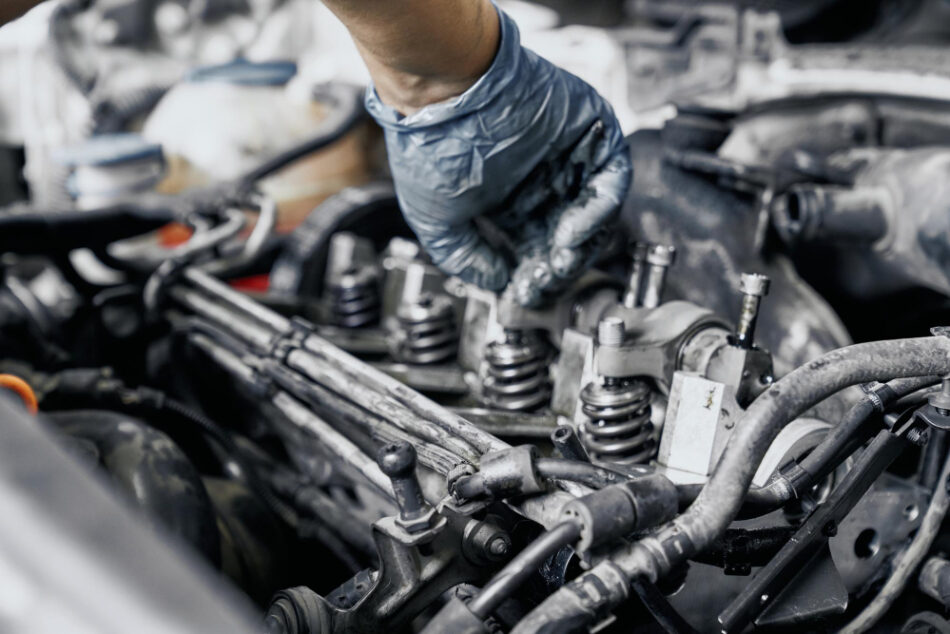Every internal combustion engine needs a little help to get going — and that’s exactly the job of the starter motor. Although it operates for just a few seconds during engine startup, this small but powerful component is essential for initiating the engine’s operation.
In this blog, we’ll delve into what a starter motor is, how it works, the types available, common issues, and maintenance tips to keep your engine running smoothly.
What Is a Starter Motor?
A starter motor is an electric motor that cranks the engine to begin the combustion cycle. It engages when the ignition switch is turned on and disengages once the engine has started. Starter motors are typically powered by the vehicle’s or vessel’s battery and draw a large current to rotate the engine’s flywheel.
How Does a Starter Motor Work?
The operation of a starter motor involves a few key steps:
-
Ignition Switch Activation: When the driver or operator turns the key (or presses the start button), an electrical signal is sent to the starter solenoid.
-
Solenoid Engagement: The solenoid acts as a relay, closing the circuit between the battery and the starter motor while pushing the pinion gear forward to engage the engine’s flywheel.
-
Motor Operation: The motor spins the pinion gear, which turns the flywheel and cranks the engine.
-
Disengagement: Once the engine starts running, the pinion gear retracts and the motor shuts off.
Key Components of a Starter Motor
-
Electric Motor: Converts electrical energy into mechanical rotation.
-
Solenoid: Controls power flow and engages the pinion gear.
-
Pinion Gear: Engages with the flywheel to turn the engine.
-
Drive Shaft: Connects the motor to the gear mechanism.
-
Commutator and Brushes: Ensure proper current flow within the motor.
Types of Starter Motors
1. Direct Drive Starter Motor
-
Traditional design.
-
Uses a gear directly connected to the armature.
-
Durable but heavy and less efficient.
2. Gear Reduction Starter Motor
-
Uses a set of gears to increase torque while reducing motor size.
-
More efficient and compact.
-
Common in modern engines.
3. Inertia Starter Motor
-
Uses the inertia of a spinning gear to engage the flywheel.
-
Simpler design, often used in older or low-cost engines.
Common Starter Motor Problems
-
Clicking Sound, No Crank: This is often caused by a weak battery or a faulty solenoid.
-
Grinding Noise: Worn-out pinion gear or flywheel teeth.
-
Slow Cranking: Battery voltage issues or internal motor wear.
-
No Response: Could indicate a failed ignition switch, solenoid, or electrical connection.
Starter Motor Maintenance Tips
-
Check Battery Health: A weak battery affects starter performance.
-
Inspect Wiring: Corroded or loose wires can cause poor electrical contact.
-
Listen for Noises: Grinding or clicking sounds may indicate mechanical issues.
-
Routine Testing: Use a multimeter to test voltage drops and current draw.
-
Keep it Clean: Remove dirt and moisture buildup to prevent electrical shorts.
Applications Beyond Automobiles
While commonly associated with cars, starter motors are widely used in:
-
Marine engines
-
Diesel generators
-
Heavy machinery and construction equipment
-
Motorcycles and ATVs
These applications often require high-torque starter motors designed to withstand harsh environments and repeated cycles.
Final Thoughts
The starter motor may be small compared to the engine, but without it, your engine won’t even start. From the ignition switch to the flywheel engagement, every part of the starter motor system plays a vital role in getting your machine running. Regular inspection and basic maintenance can go a long way in avoiding unexpected failures and costly repairs.









